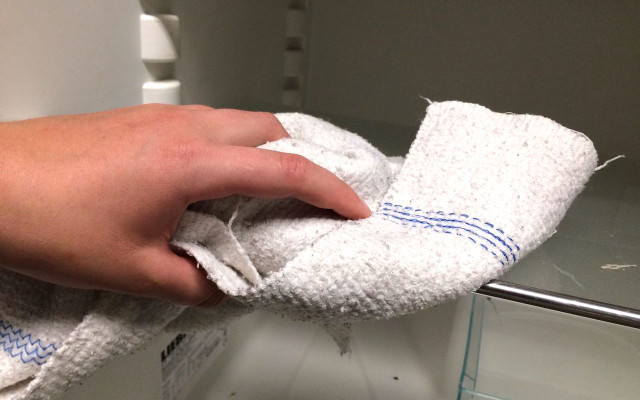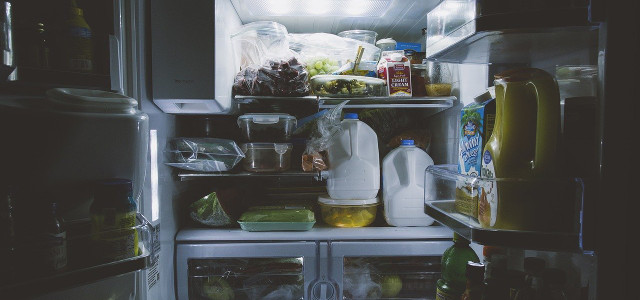The inside of your fridge is the last place you should use harsh chemical cleaners. In this article, we’ll show you how to use simple household products to clean your refrigerator and eliminate bad smells.
Bacteria can’t grow in the fridge, right? Wrong. Some bacteria grow and even thrive at colder temperatures, and to prevent them from building up and getting in your food, it’s a good idea to clean your refrigerator at least every four to six weeks. But instead of harmful chemical cleaners, we recommend using a simple household solution.
For a quick cleaning of your fridge, follow these steps:
- Mix about 100ml of white vinegar with water.
- Next, use a rag and the vinegar water to wipe out the inner walls, shelves, and drawers of your refrigerator.
- Before you put your food back into the refrigerator, wipe all surfaces off again with water.
Alternative: If you’d rather not use vinegar, you can make the fridge cleaner using lemon water. Press one or two organic lemons and mix the juice 1:1 with water.
Tip: Vinegar and lemon are extremely versatile natural cleaning agents — among other uses; they can be used to unclog your drain, as a window cleaner or for cleaning tiles.
A quick wipe-down of your refrigerator every month or so will go a long way, but a few times a year, you’ll want to do a deeper, more intense cleaning. Here’s how to clean your refrigerator more thoroughly.
Step 1: Shut Your Fridge Off, Thaw Out, and Clean

- First, turn off the refrigerator and pull the plug from the wall.
- Remove all food: in the meantime, place it somewhere cool, for example, in the basement, on the balcony, or in a cooler.
- Slide the refrigerator forward away from the wall. Now you will have space to vacuum clean the metal grid on the back of the fridge. The more dust blocking this grid, the harder the refrigerator has to work to keep the temperature inside cool.
- Many refrigerators also have an opening for water runoff in the back. A q-tip works well for cleaning this.
- Thaw out the freezer by simply opening the door and waiting. If you want to speed up the process, pour hot water into a bowl, place the bowl in the freezer, and close the door.
Tip: To collect the excess water, lay a dry towel in the freezer drawer while it is still cold. Whatever you do, don’t try to scrape off the ice that can build up on the inner walls: it will only damage the surfaces inside the freezer.
Step 2: Clean the Inside of Your Fridge



Now that you’ve taken care of all the preparations, you can get to business.
- Remove all drawers, shelves, and any other moveable parts of the inside of your refrigerator.
- Use your vinegar or lemon water natural fridge cleaner to wipe everything down. Be sure to get into all the nooks and crannies.
- Use your vinegar or lemon water to wipe out the inside walls of the refrigerator.
- Warning: the sealing inside refrigerators tends to become especially dirty, but lemon juice or vinegar can damage the material. To clean the door sealing, it is best to use mild soap and water.
- Now that you’re done cleaning the refrigerator let it air out for several hours. Make sure that any condensation can run off.
- Replace the shelves and drawers, turn the refrigerator back on and replace all your food. Take this opportunity to organize your fridge and ensure that you are only keeping produce in the refrigerator that belongs there. Some fruits and vegetables go bad more quickly inside the fridge than outside.
How to Avoid Odors Inside Your Fridge
Unpleasant odors from things like cheese or any strongly-flavored food can be avoided by placing any of the following neutralizing foods on a plate or in a bowl inside the refrigerator:
- Ground coffee or coffee beans
- Half a lemon with a bit of baking soda
- Half an apple
- Half a potato
Do you like this post?






